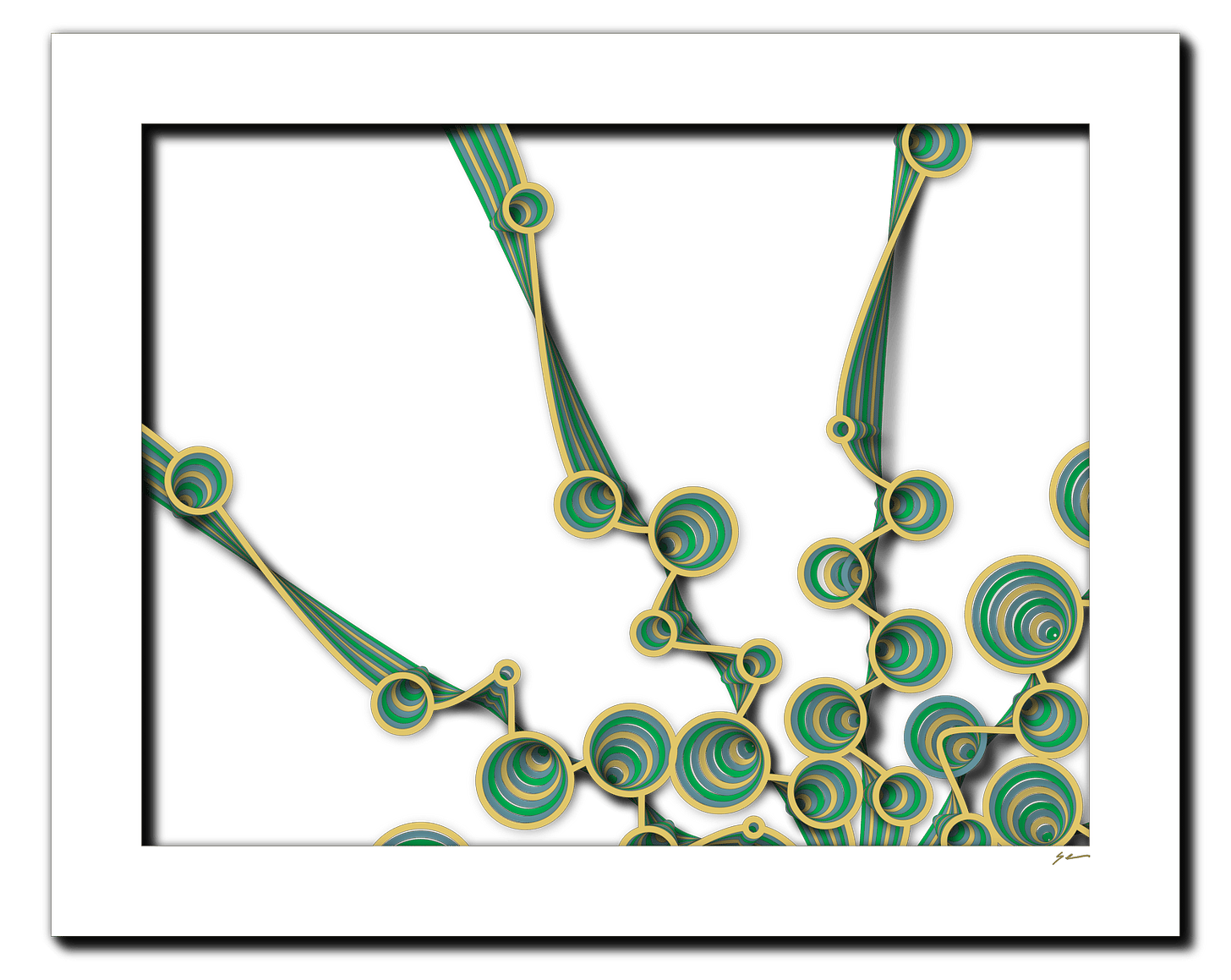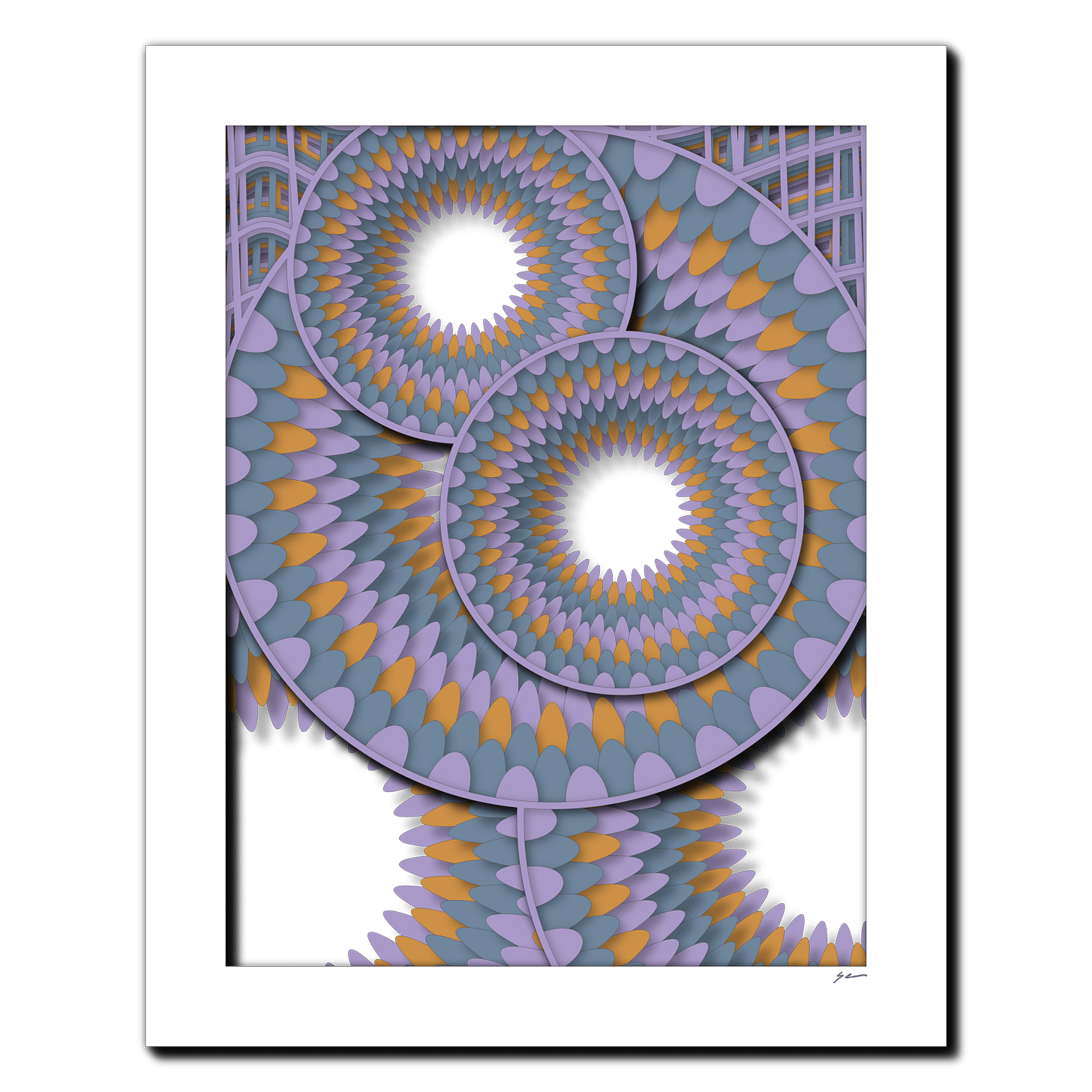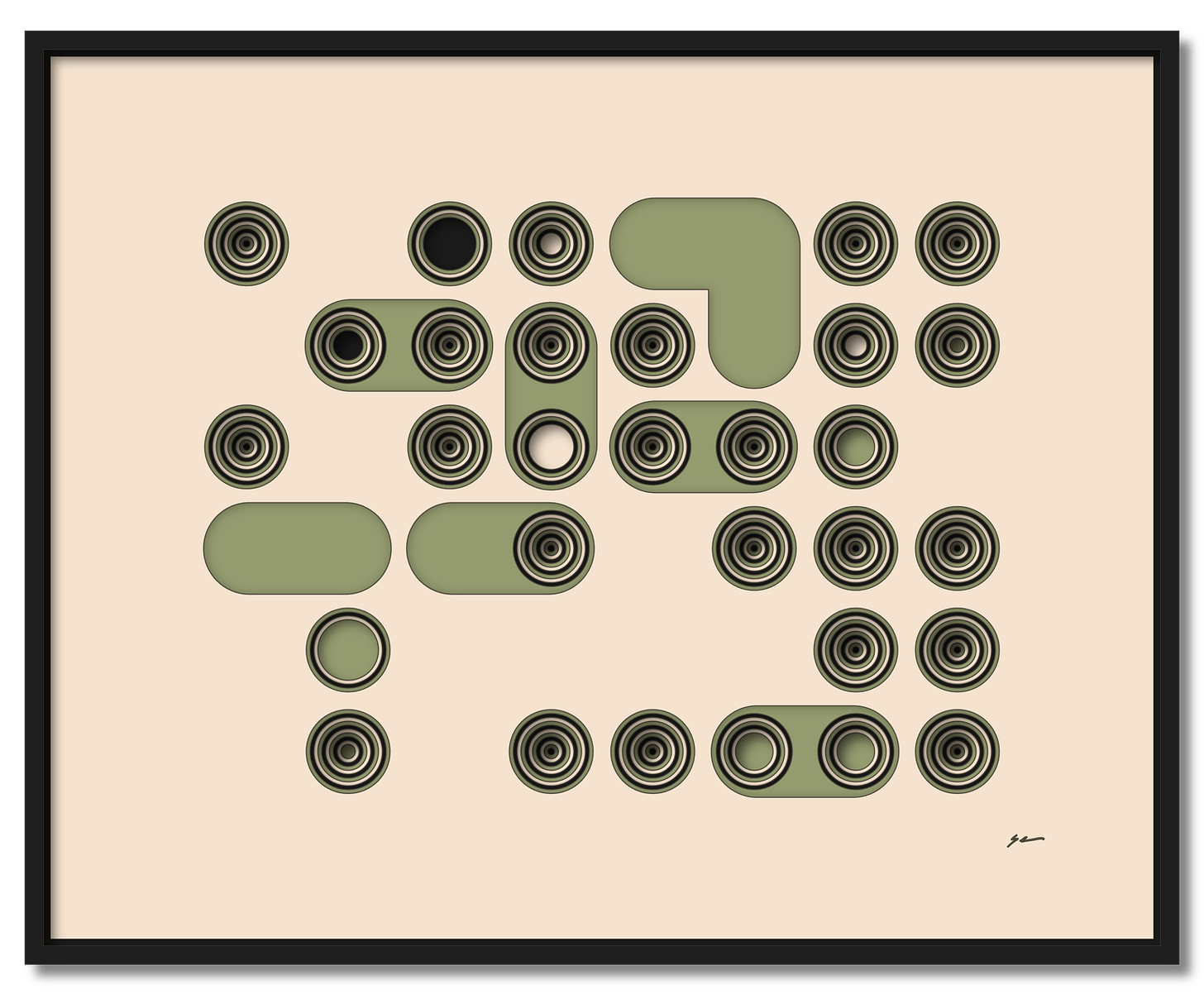Why I’m Making Singulars
One-of-a-kind generative artworks, crafted by intuition, code, and hand. For one person at a time.
For years now, I’ve been making generative art that straddles two worlds: the computational and the physical. I use code, written line by line, refined over time, to produce layered vector designs. Then I step away from the screen and into the studio, where those designs are cut into sheets using a high-powered laser, and assembled by hand using bookbinding glue and a steady hand. The result is a physical object. A dimensional piece of art. One that changes with light, with perspective, with time.
There’s something deeply satisfying about watching code become form. About taking something born in pure math and transforming it into something you can hold, hang, walk past every day. It’s a way of honoring both precision and imperfection, structure and softness. And it never gets old.
In the last year or so, I started to feel a shift. It wasn’t dissatisfaction exactly, it was more of a pull. A desire to slow down and go deeper. To stop working in batches, and instead work one-to-one. Not just with the code, but with the people who collect the work. I wanted to bring them into the process, not as passive buyers, but as catalysts. Collaborators in a sense. Not in the making of the work, but in its becoming.
That’s where Singulars came from.
I designed the project to be deliberately slow, personal, and intentional. People begin by joining what I call the “curiosity waitlist.” There’s no pressure, no immediate action required, just an invitation to signal interest. When I have the bandwidth, I reach out to a few people and invite them to share something about themselves. Sometimes they send a short note about what they’re drawn to, colors, feelings, geometry, memories. Other times it’s longer: stories, fragments, music, even dreams.
From there, I go into the code. But this isn’t a form you fill out and get an automatic response. It’s not automated at all. I read what they send and then, intuitively, I start making small adjustments to the parameters. It’s hard to explain how this works. It’s not rational. It’s more like feeling around in the dark for the shape of something. I generate dozens of outputs, sometimes more, waiting for that moment of recognition.
When the right one emerges, I just know.
Curious to see what your Singular will look like?
Join the curiosity waitlist and be the first to receive an invitation when new spots open. No pressure, no obligation, just a chance to be part of something rare.
There’s always this moment when the output appears on screen and it clicks. A little wave of alignment. Like the algorithm and the person and the story have all landed in the same place.
When that happens, I send them a digital version of the piece. They get 24 hours to collect the physical edition at a special price, usually $275. I like the idea of rewarding the person who catalyzed the piece. They brought it into being, after all. But if they pass, the piece isn’t lost it becomes available to other curiosity members for $550 for the next 24 hours. And if no one claims it there, it enters the public offering at $1,200.
This might sound like a pricing strategy, but to me it’s more like a rhythm. A kind of ritual. There’s energy in the unfolding, first private, then shared, then released. It gives each piece a little life cycle. It makes it feel alive.
If someone chooses to collect the piece, then I begin the physical work. The digital output is a stack of precisely aligned vector layers, each one representing a different plane in the final composition. I take those files and send them to my laser cutter, which slices through acid free mat-board with incredible accuracy. The cuts are delicate, barely a hair’s width. Then I carefully stack the layers, one by one, and begin assembling them with PVA, an archival-quality glue used in traditional bookbinding.
The process is slow. Hands-on. Meditative. Each layer must be aligned perfectly. The glue needs to be applied with care. Too much and it warps the board, too little and the layers don’t hold. It’s a process I’ve refined over years. And it still feels like a kind of magic every time.
When it’s complete, the piece is sculptural. It casts shadows. It holds depth. It changes depending on how the light falls across it, or where you’re standing in the room. It rewards attention. And most importantly, it lives in the world, not on a screen, but on a wall, in a home, part of someone’s everyday life.
That’s really the heart of it for me. I want these pieces to spark curiosity. To start conversations.
Maybe it’s something someone notices behind you on a Zoom call. Maybe it’s something your kid asks about during dinner. Maybe a friend sees it and says, “What is that? How was it made?” And suddenly you’re talking about math, randomness, layering, texture, code. You’re talking about the intersection of the human and the machine. About intuition and structure. About how something abstract can still feel deeply personal.
I think of each Singular as a kind of visual poem. Not something to solve or decode, but something to sit with. To feel your way into. To return to over time.
They’re made one at a time, for one person at a time. And my hope is that each one becomes more than just a piece of art—that it becomes a companion. A mirror. A curiosity that keeps unfolding.






